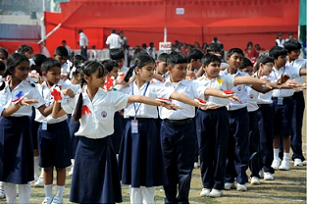# 51 pc in secondary and 25 pc rise in primary
# Increased cost due to private tutors and guidebooks
# Six recommendations raising
New curriculum cost still not get
- Dr. Manzoor Ahmed, Chief Researcher
In the first six months of 2023, household education expenditure increased by 51 percent at the secondary level and 25 percent at the primary level compared to the previous year. On Saturday at Sirdap Auditorium in the capital, such a picture was found in a research report by Education Watch.
According to the report, in 2022, the annual average family expenditure for child education at the primary level is Tk13 thousand 882. And in the first six months of 2023, this expenditure is Tk8 thousand 647. Where there are some differences between villages and towns. The cost in the village is Tk6 thousand 586. The cost in the city is Tk11 thousand 59. In 2022, the family expenditure for a secondary-level student is Tk 27 thousand 340. In the first six months of 2023, this expenditure has been Tk20 thousand 712. The cost in the city is Tk28 thousand 507. Tk16 thousand 751 spent on village students.
The main reason for this increase in cost is the salary of a private tutor or coaching center salary. Apart from this, there is an increase in the price of guidebooks, an increase in the price of school uniforms, stationery, examination fees, and an increase in fees of educational institutes.
About 41 percent of parents at the primary level and 17 percent of parents at the secondary level said they could afford to spend between Rs 2,000 per child per month, which is much lower than the average expenditure in 2022 and 2023.
It is known that the research has selected 16 districts, 2 each from 8 divisions of the country. Primary and secondary schools and classrooms of 128 selected schools in 16 districts were visited and observed. A total of 7,225 students, teachers, parents, and education officials participated in direct interviews. 41 percent of primary, and 49 percent of secondary are engaged in child labor
41 percent of primary school-age children and 49 percent of secondary-level children are engaged in work or child labor. More than half of girls enrolled in primary and secondary education are victims of child marriage. A small proportion said they were engaged in household work and others said they were doing nothing.
Besides, the research also revealed that more than half of the dropouts at the primary level, 57 percent, and 79 percent at the secondary level, are not interested in returning to school. A small proportion said they could return to school if their families were given financial support and parents were made aware.
Education Watch's research report recommends that students engaged in child labor contribute financially to their families through earnings, which points to poverty as a reason for their dropout. To eliminate the causes of dropout and ensure effective participation in school, the quality of school education should be raised to an acceptable level and should be affordable for the family.
Dr. Manzoor Ahmed, the chief researcher of Education Watch-2023, said that after 2022, four and a half percent of students are not in primary and six percent of students are not in secondary.
Regarding the cost, he said, the cost has increased due to various reasons including the increase in the price of goods. Costs have increased by 25 percent in primary and 51 percent in secondary. Expenditure is high on coaching, tuition, and guidebooks. The calculation of the new curriculum is yet to come. He said that although the impact of the cost has been reduced, the condition has not yet been shown.
What is stated in the research recommendations
Below are policy and strategy recommendations to overcome the post-Covid pandemic impact on education and for recovery and renewal. These recommendations are based on the findings and conclusions drawn from the learning-challenges analysis, which covers seven key issues discussed.
1 To bring back the dropouts and the deprived without stopping the education of children
2. Helping students meet post-pandemic learning challenges
3 Support and incentives to teachers
4 Lesson and time management in the classroom and the extent of teacher decision-making
5 Reducing the burden of education expenses on the family
6 Introduction and adoption of ICT-based teaching and learning methods
ZH






